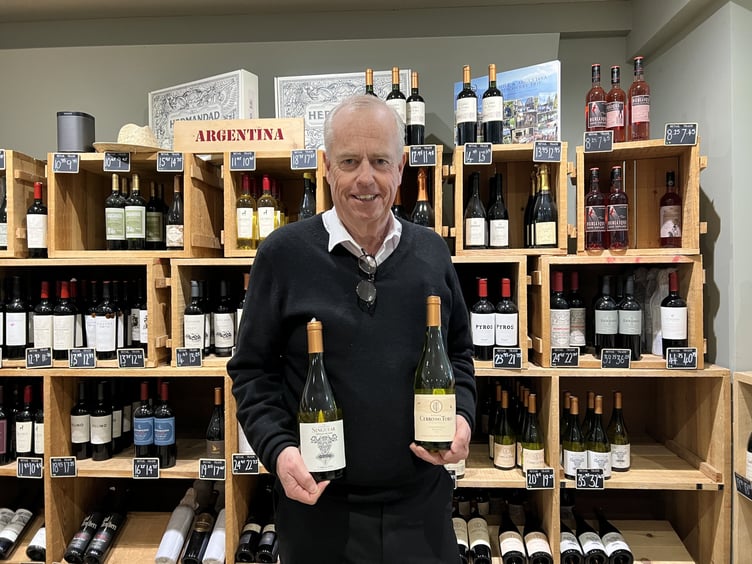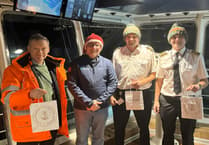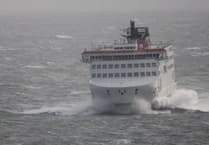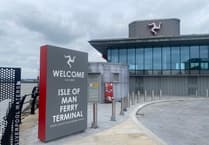The chairman of the Steam Packet, Lars Ugland, runs a vineyard in his own time.
The Norwegian shipping executive moved to the island in 2007.
Since then he has had various high profile roles, including being the chairman of the Steam Packet, chairman of the Isle of Man Shipping Association and the Norwegian Consulate in the island.
The vineyard that he runs, Bodega Cerro Del Toro, is based in Piriápolis in Uruguay, and was established in 2016.
Since its conception, the vineyard has developed 30 different types of wine, and now produces approximately 250,000 bottles a year.
The wines are exported to Brazil, the UK, USA, Mexico, Sweden, and are soon to be exported to Norway as well as the Netherlands, Australia and Japan.
In the last 18 months, the Uruguayan wine has become available in the Isle of Man which you can find in the Wine Cellar.
The vineyard is located in a field of 800 hectares, of which 26 hectares are currently used to produce wine.
The land is owned by Makoto Kambara and his family, a good friend of Lars, and together, they undertook the project.
Lars explained how the idea came about: ‘My friend, Makoto, showed me his master plan for his land.
‘He said that he wanted to have various real estate and lots of different activities, like a golf course and health club on the land.
‘He also wanted a vineyard, but he wanted that on the northern most part of the land, which is unsuitable for wine.
‘I told him it wasn’t a good idea to have a golf club.
‘A few years later, we met again in London in 2015, and Makoto told me that he had decided to make a vineyard in Cerro del Toro, and said “Lars, you are in charge”.
‘I told him I haven’t built a vineyard before, but he trusts me, and we have worked on projects together in the past.’
‘We had to firstly check whether the soil and the climate was good enough, so we got a specialist to come to Cerro del Toro and check.
‘He told us that the soil was amazing for wine-making, and that it was one of the best soils he has tested in Uruguay.
‘I checked again before we had grown the first plant, asking if we could actually make quality wine, and he said “don’t worry, I can guarantee what is being planted will be fantastic, and he was right”.’
The next step was putting together a team.
Lars said: ‘A contact of mine told me to approach his managing director, who was running a shipping management company in Argentina and Uruguay, and knew a lot about wine. So I contacted him, and he put together a team.
‘When we started, my knowledge was to go for quality, and get the right people in. I always want to go for quality in everything I do, not only in wine, but it is what I say to the Steam Packet for example with the food, I said it needed to be better, so we got the chef from 14 North [in Douglas] to come in.
‘In terms of the people, I just have to take my hat off to the team we have in Uruguay, I couldn’t be happier with them.’
Lars added: ‘I can’t say that I was hands on when we started the vineyard, but I was responsible, and still am responsible.
‘We got a budget, and we stuck to that, so we planted in 2016, and after two years we had the first harvest, which was 2018.
‘When it comes to harvest, you have to be careful when the plants grow, that when they start to produce fruit, if you let them grow all the fruit, then the plant will be very weak.
‘So when they are just buds, you have to cut them off, before the fruit starts to grow.
‘In terms of the soil, normally after three years you can start to harvest a new plant.’
Yet running a vineyard doesn’t come without its challenges.
Lars said: ‘For this harvest, which because it is in the southern hemisphere, it is around January or February, we had a problem with the weather this year.
’There was a hailstorm that came out of the blue, which is quite unusual, but that presented some challenges for us.
‘We lost about 15% of the grapes that had been planted. Although we are 20% down on the volume from last year, the quality has increased.
‘This year there was also a big fire, which spread right up to the border of the vineyard.
‘Someone had set neighbouring land on fire, and it had spread to within a few yards of the land just before harvest.
‘I would say if you want to make money, this is not the industry, because it is a huge investment before you can make money.
‘Quite a few of the vineyards in Uruguay are struggling because of both the investment, but also you have no control over the environment when it comes to the weather, which is a huge factor as to whether you can survive harvest or not.
‘There are a lot of challenges, and I think with the way that we are producing at the moment, we are hoping to breakeven in four years from now.’
The young vineyard has received a lot of praise.
In the Guia Descorchados 2023, a South American wine publication, which looks at wines in Chile, Uruguay, Brazil and Argentina, two of Bodega Cerro del Toro’s white wines were included in the top ten white wines of the year, and one red wine label from the vineyard was in the top 10 red wines of the year.
It is not just in South America that the wines are getting a positive response.
JJ Moore, the managing director of the Wine Cellar, Peel Road, Douglas, which sells seven Bodega Cerro del Toro labels, said that the wines are very well-received.
He said: ‘We were first introduced to the winery 12 to 18 months ago, and the current vintage wines arrived with us in early April this year and are tasting very well. This is a very young winery and has a fantastic winemaker,I am confident it will go from strength to strength.
‘We have wines from all over the world but Uruguay is an up and coming South American region.
‘Uruguay is a small but promising wine region, not as well known as other South American power houses such as Argentina and Chile, but rapidly gaining recognition for producing high quality wines.
‘Uruguay’s wine industry is characterised by many family owned wineries and boutique producers which fits well with the ethos of The Wine Cellar.
‘Over the years we have sold Uruguayan wines from a few different producers, however with the Isle of Man connection and the quality of Cerro Del Toro we are focusing a large share of our Uruguayan portfolio on this winery currently.
‘We always look to support local producers and those residents with links to wineries and distilleries worldwide.
‘The wines have received some really positive feedback so far, both at our recent spring tasting and more recently with some of our regular customers.
‘The Albarino has scored highly by some wine critics and with the growing popularity of this grape is a great opportunity for Cerro Del Toro.’
Lars continued: ‘Eventually I would like to have all of our wines available in the Isle of Man, and I hope it is more than just me drinking them.’




Comments
This article has no comments yet. Be the first to leave a comment.